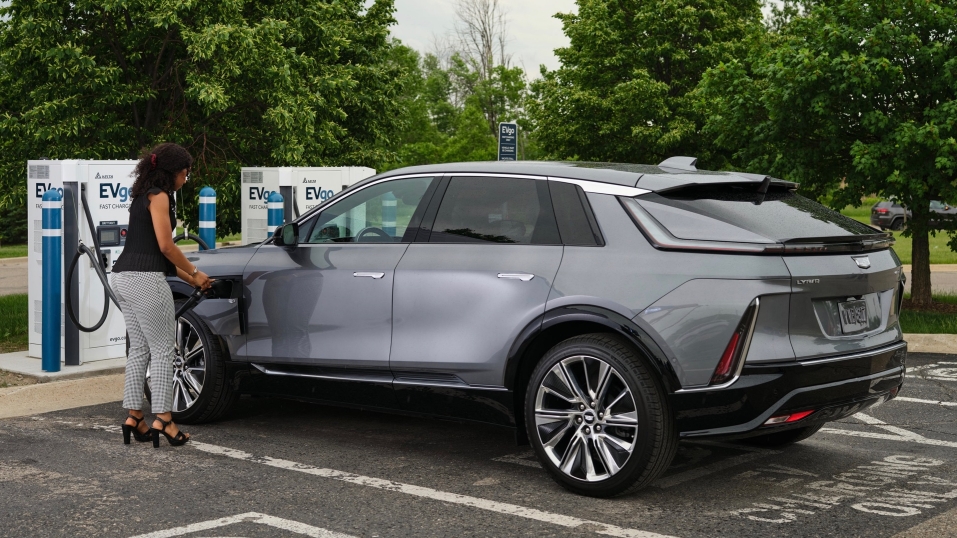A consortium of stakeholders aims to roll out a universal plug-and-charge protocol for the U.S. in 2025, allowing all electric vehicles to automatically start charging at public stations simply by plugging in.
Announced Wednesday, the initiative is being undertaken by the Society of Automotive Engineers (SAE), the federal government's Joint Office of Energy and Transportation, and the Electric Vehicle Public Key Infrastructure (EVPKI) consortium, which represents automakers, charging networks, hardware manufacturers, and other private interests.

Some automakers have been rolling out plug-and-charge piecemeal, often packaged as part of charging ecosystems for each brand's customers. But that's left a range of situations in which plug-and-charge will work with some vehicle-and-charger or vehicle-and-network combinations but not others. This new effort aims to shift reliance away from individual automakers or specific hardware or software variations and make plug-and-charge the norm.
“Universal Plug & Charge levels up the electric fueling experience — making it even easier than filling up with gas,” says Gabe Klein, executive director of the Joint Office of Energy and Transportation, in a statement. “We are rapidly approaching a future where every EV driver can just plug in, charge up, and go; the network will talk to your car and process the payment seamlessly.”
In a recent study, research firm Accenture cited charging infrastructure as one of the top three reasons deterring many from buying an EV — the other two being high upfront costs and potential lifestyle disruptions.
In the U.S., at least, charging infrastructure has been fast expanding over the past few years, led by the likes of Chargepoint, Tesla’s SuperCharger network, Electrify America, and the Rivian Adventure network. Even wholesale retailers such as Costco and Walmart are adding EV-charging capacity.
Yet, EV drivers have continued to have somewhat of a fragmented charging experience.
On the one hand, many EV models still feature different charging ports — the old Combined Charging System (CCS) or Tesla’s North American Charging Standard (NACS). On the other hand, EV drivers have had to rely on apps from their vehicle manufacturers for everything from finding the right charging stations to connecting with various payment platforms.
Once implemented, the new universal plug-and-charge protocol will allow vehicles, chargers and charging networks to “talk to each other” for the first time.
“No more using multiple apps or payment methods,” the consortium says. For EV drivers, this promises “faster, automated charging with any public station and any car.”
That means developing a common framework that allows all EVs, chargers, and charging networks to seamlessly communicate, a press release from the Joint Office of Energy and Transportation, a collaboration between the Department of Energy (DOE) and Department of Transportation (DOT), said. The office was created under the Biden administration's infrastructure law to serve as the main point of contact for the administration's national EV charging network plan.